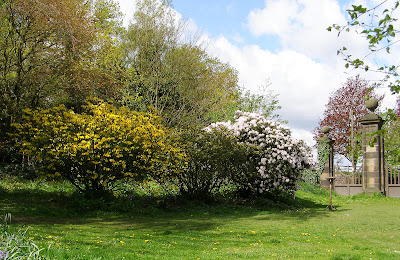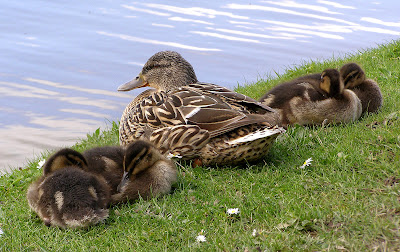Brighter and warmer this morning after a night of heavy showers and more water-logging of the ground. so it was off to Straw's Bridge again, keeping to the tarmac paths and staying off the soft ground. On the way, we noticed a large number of Garlic Mustard plants (
Alliaria petiolata) growing along the paths. One of the Brassica family, they are therefore closely related to cabbages and radishes. Used in antiquity as a disinfectant and diuretic, the leaves can also be used in salads and pesto.
Another white flower found in profusion around these parts is the far more delicate-looking Great Stitchwort (
Stellaria holostea). Related this time, to Carnations, Pinks and Corncockle, this beautiful flower is suffering a little in the heavy rain of late.
Turning for home once more, a few Orange-tip Butterflies (
Anthocharis cardamines) were found flitting about the Dandelions. Usually fond of the Cuckoo Flowers which are in full bloom right now (another Brassica), it is only the male butterflies which display the distinctive orange wing-tips. The females are more 'drab' and more like a small, 'cabbage' white butterfly. This little chap was so busy feeding he, didn't seem to mind me pointing my camera at him.
















































